Author
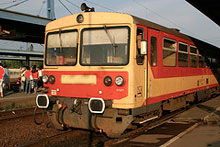 Sunday, March 21st, 1993, three travelers are waiting on the platform at Debrecen railroad station in Hungary. Howard Layton is listening to his brother-in-law, András who is lecturing Howard's daughter Paulette.
Sunday, March 21st, 1993, three travelers are waiting on the platform at Debrecen railroad station in Hungary. Howard Layton is listening to his brother-in-law, András who is lecturing Howard's daughter Paulette.
"The trip to Cluj Nabakov will take several hours and you must use it to quiz your father about his family history. Learn all you can, while you can. One day you will be glad you did."
As Howard listened to this lecture, he realized he would enjoy telling his daughters the story of his life. In fact, he mused, why not write about it? Putting his action-filled history on paper would provide him with an outlet for artistic creativity and would serve as an effective substitute for all those wonderful times he had enjoyed as a professional actor in England.
The more he thought about it, the more excited he became about the prospect. He would write a trilogy. He would start with the story of how, at the end of WWII his wife Nárcissza and her family had been chased out of Hungary by the advancing Russians. He would write about how he had met Nárcissza and how they had married, raised six children and built a high-tech manufacturing company together.
Next would come the story of his own life and his 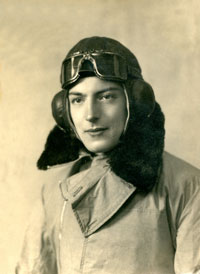 years in the Royal Air Force serving in the deserts of North Africa in World War Two, and the interwoven agony of pining for the wonderful girl he had won and lost during those years. Finally, he would write about growing up in a broken home in the between-wars years and going off to work at age fourteen to help support himself and his mother and younger brother.
years in the Royal Air Force serving in the deserts of North Africa in World War Two, and the interwoven agony of pining for the wonderful girl he had won and lost during those years. Finally, he would write about growing up in a broken home in the between-wars years and going off to work at age fourteen to help support himself and his mother and younger brother.
'The Thirteen Club' and 'Love and Sand' eventually came into being as the result of those musings, and 'Death of Cope Street' is already in the research phase.
Actor
"As a child, our occasional visits to school plays and the theatre really enthralled me. I didn’t reveal it to anyone because my brother and I already had our problems and got into fights at school because of our neat appearance and short pants. Raising us by herself, mother did the very best for us she could, but she didn’t realize that children need to be dressed like their peers and boys need to be dressed like other boys. I didn’t want to make matters worse, so I didn’t do any play-acting or get involved in school productions because in those days it was considered a sissy thing for boys to do. Play-acting was for girls, so I buried my love of the stage and concentrated on all the things that boys were supposed to be interested in.
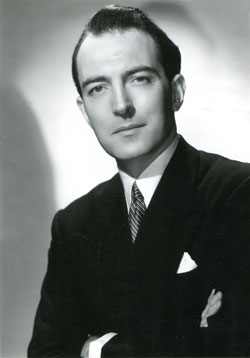 "The yearning stayed with me and when I resigned from the RAF after the end of World War II, I got myself some training at the J. Arthur Rank School of acting and spent the next five years earning my living by ‘treading the boards’ and playing small parts in films.
"The yearning stayed with me and when I resigned from the RAF after the end of World War II, I got myself some training at the J. Arthur Rank School of acting and spent the next five years earning my living by ‘treading the boards’ and playing small parts in films.
"Eventually, I found myself playing before Queen Mary, the present queen’s grandmother, and being invited to her box to shake her hand and receive her generous praise. But my crowning achievement came when Robert Taylor was obliged to return to the USA without completing his role in “Conspirator.” He managed to do all the close-ups and the scenes with Elizabeth Taylor, but for the remainder of his role, the studio makeup artists transformed my appearance so that I was able to take his place.
"I thereby enjoyed a rollicking, exhilarating, and hazardous eight weeks of motion-picture heaven!"
Engineer
"As a boy I was always interested in electrical toys and Meccano (Erector) sets. By the time I was fourteen I was able to totally re-wire the electrical panel and fuse box in our home. Even in my school days I had learned how to make one-valve (vacuum tube) radio receivers by winding my own tuning coils and mounting the components on a plywood base. Since I was able to trade these home made radios for Meccano sets, I eventually owned the largest Meccano outfit of anyone in my school.
"When, at age 14½, the need to help out with expenses at home made it necessary for me to get a job, I started work at the General Electric Company near our home. At that company, I applied for part-time schooling at the Coventry Technical College and studied there for three years. Thereafter, I  continued my training at the GEC factory itself, and later at the Royal Air Force College in Cranwell. Still later, as a member of the Institute of Electrical Engineers, I won the coveted title of Chartered Electrical Engineer, eventually becoming Vice Chairman of the New England Chapter of that organization.
continued my training at the GEC factory itself, and later at the Royal Air Force College in Cranwell. Still later, as a member of the Institute of Electrical Engineers, I won the coveted title of Chartered Electrical Engineer, eventually becoming Vice Chairman of the New England Chapter of that organization.
"Needless to say, in later years, that long and varied background served me well in the development of my high-tech manufacturing company."
Inventor
 In the early days of his company’s existence, IBM was Howard’s only customer, so when the purchasing chief at Poughkeepsie read the riot act and insisted that he go out and get more clients, Howard's first success was with the Bell Telephone Labs.
In the early days of his company’s existence, IBM was Howard’s only customer, so when the purchasing chief at Poughkeepsie read the riot act and insisted that he go out and get more clients, Howard's first success was with the Bell Telephone Labs.
 At their facility in Holmdel, New Jersey, and at a second location in Reading, PA, he found fertile ground for innovation. It was at these laboratories that he was introduced to the difficulty of drying silicon wafers after rinsing without re-contaminating them. Howard found a way to solve this problem and was subsequently granted his first US patent for his invention. Later, at the urgings of business advisors, Howard applied for patents whenever a significant new idea served to solve some manufacturing difficulty.
So to date Howard Layton has authored sixteen US patents and co-authored six others.
At their facility in Holmdel, New Jersey, and at a second location in Reading, PA, he found fertile ground for innovation. It was at these laboratories that he was introduced to the difficulty of drying silicon wafers after rinsing without re-contaminating them. Howard found a way to solve this problem and was subsequently granted his first US patent for his invention. Later, at the urgings of business advisors, Howard applied for patents whenever a significant new idea served to solve some manufacturing difficulty.
So to date Howard Layton has authored sixteen US patents and co-authored six others.
Airman
The following is an excerpt from 'The Thirteen Club.'
"Back when World War II had not yet begun, I used to spend some of my Sunday mornings visiting the local airport at Baginton near Coventry. Sometimes I would go with my friend Doug Phillips, and sometimes I would go alone. Sitting on the grass at the edge of the field, I would watch the local flying club doing its stuff. There would always be takeoffs and landings to see, and sometimes there would be air-shows with all sorts of breathtaking 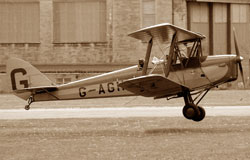 maneuvers going on right above the airfield. I got to know some of the pilots and instructors and was able to see how students progressed as the weeks went by. In the first few hours of their training, before they had learned to advance the throttle smoothly, takeoffs tended to be erratic and, on landing, the little Tiger-Moth biplanes would bounce a few times before settling down on the grass. Now and again they would bounce along like performing porpoises and the instructor would have to intervene to rescue the landing.
maneuvers going on right above the airfield. I got to know some of the pilots and instructors and was able to see how students progressed as the weeks went by. In the first few hours of their training, before they had learned to advance the throttle smoothly, takeoffs tended to be erratic and, on landing, the little Tiger-Moth biplanes would bounce a few times before settling down on the grass. Now and again they would bounce along like performing porpoises and the instructor would have to intervene to rescue the landing.
"As weeks went by and skill and confidence developed, the same student was able to take off and land more smoothly. The sudden power bursts on takeoff were replaced by smoothly controlled surges to steady crescendos, and on landing, the point at which the aircraft would touch down became more and more predictable. It was an absorbing way to spend a couple of hours now and then, and I promised myself that some day I would be one of those pilots. I would be flying instead of watching."
Businessman
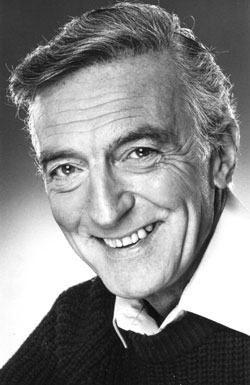 When Howard Layton founded Interlab Incorporated, he did not have manufacturing activities in mind at all. Where would he get the money? And with only a 20ft by 20 ft office to work in, where would any manufacturing be done? No, that was not in his agenda. Instead, he hung out his shingle as a manufacturer’s representative and proceeded to look for firms who made the kinds of products that he felt qualified to sell. However, when he began to offer his wares to IBM in Poughkeepsie, New York, he encountered opportunities that changed his mind. IBM was not happy with the available products of the day. They needed vendors who could be taught to understand and manufacture products according to IBM’s own operating specifications and Howard was only too willing to learn.
When Howard Layton founded Interlab Incorporated, he did not have manufacturing activities in mind at all. Where would he get the money? And with only a 20ft by 20 ft office to work in, where would any manufacturing be done? No, that was not in his agenda. Instead, he hung out his shingle as a manufacturer’s representative and proceeded to look for firms who made the kinds of products that he felt qualified to sell. However, when he began to offer his wares to IBM in Poughkeepsie, New York, he encountered opportunities that changed his mind. IBM was not happy with the available products of the day. They needed vendors who could be taught to understand and manufacture products according to IBM’s own operating specifications and Howard was only too willing to learn.
With those specifications, he designed new products and sub-contracted their manufacture to others. By this means his business with IBM grew, and eventually a scientist at the IBM Research Laboratories at Yorktown Heights invited him to equip an entirely new lab with equipment of his design, dismissing Howard’s excuse that he did not have a factory in which to build the stuff, by offering to let him put it together right there in the laboratory itself.
"Howard, all you have to do, is sub-contract all the bits and pieces, then gather them all together in a U-Haul van, then bring them into the lab and build the equipment right here!"
From that unconventional beginning, Howard and his wife Nárcissza developed a bona fide manufacturing business, first in the huge basement of a house they bought expressly for that purpose, and then moving to larger and larger factories as the enterprise flourished. It was at this time that he purchased a Piper Saratoga aircraft and flew it for ten years to better serve his customers.
'The Thirteen Club' tells the whole story.
Book Signings and Public Speaking
Howard is available for public talks as well as for book signings. Click here for more information…
Buy Howard's Latest Book, 'Love and Sand' now in either paperback or for the Kindle.
Buy the books
Howard Layton's books are available from Three Spires Publishing and Amazon. You may order them here.

Howard Layton can add to your event
Whether you are a Veterans organization, have an interest in flight history, engineering or business, he will inspire your audience.